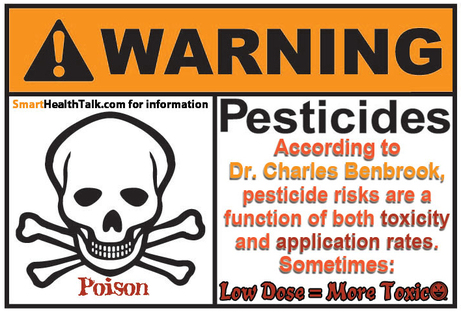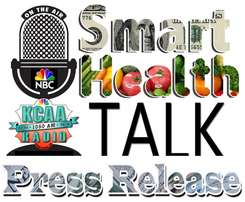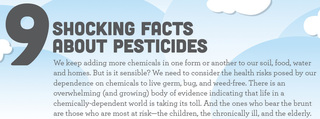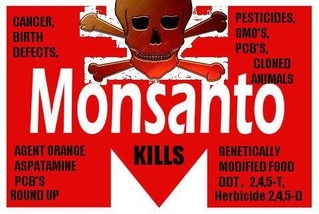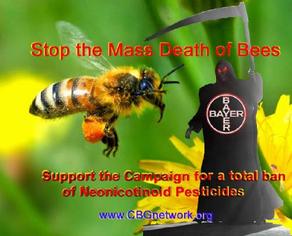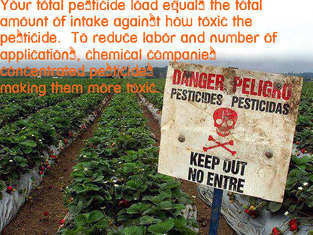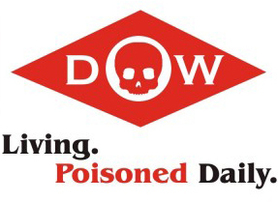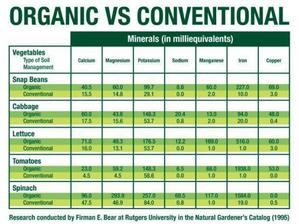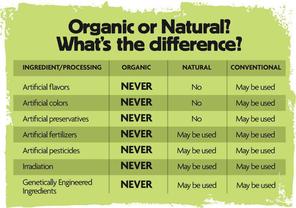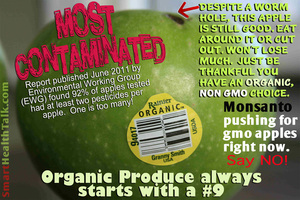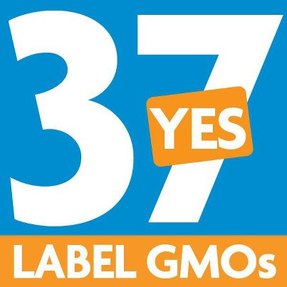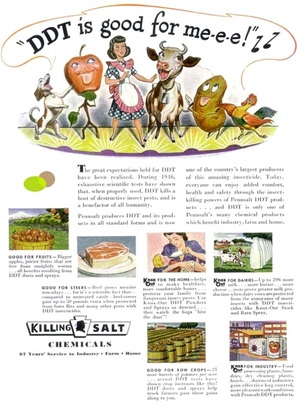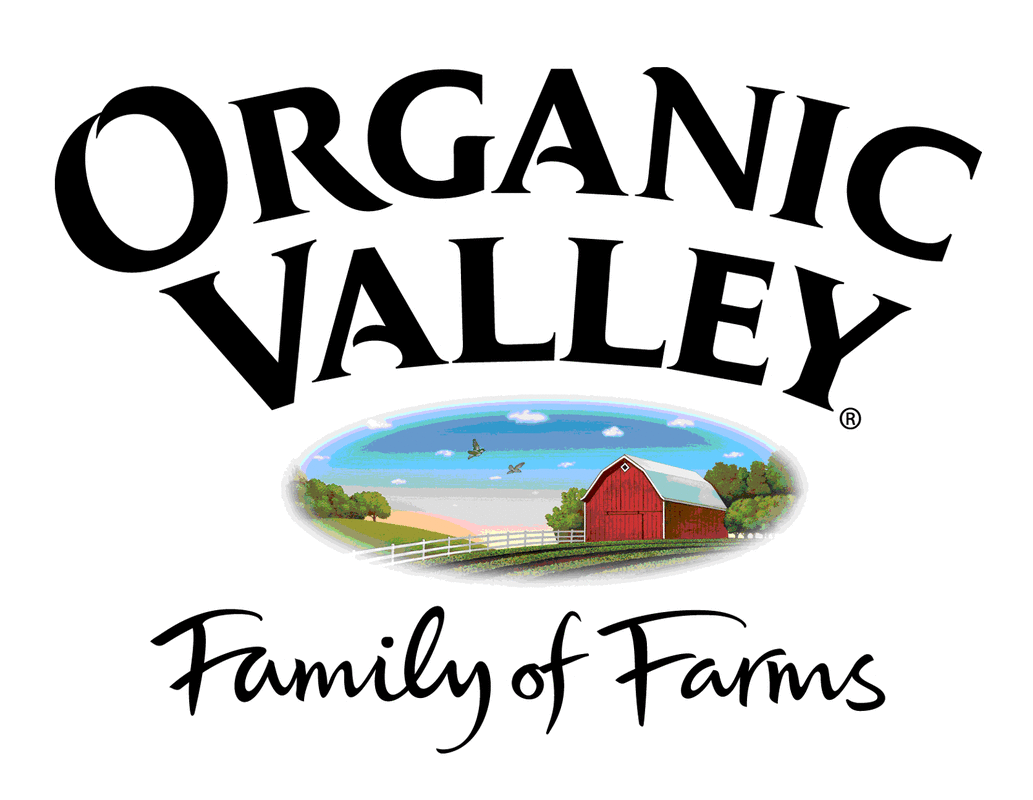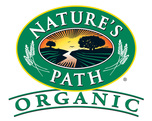|
|
|
|
|
Listen to and read our interview with
Dr. Charles Benbook research scientist.
Dr. Charles Benbook research scientist.
|
Listen now or download and listen later.
Smart Health Talk interview with Dr. Charles Benbrook, pesticide scientist, on changes to pesticide toxicity/risk.
Dr. Charles Benbrook is one only people on the planet who have read over 200 of the 298 references evaluated as part of the meta analysis of the Stanford study. Dr. Benbrook has spent the last 10 years tracking very closely all of the science and many more studies beyond what the Stanford team considered in its meta analysis.
The Stanford group were described by Dr. Benbrook as, “A group of physicians trained in the medical sciences used to conduct clinical trials in biomedical research who took on a daunting task that involves scientific disciplines quite outside of their field, made a series of rookie mistakes, and their methodology really wasn’t appropriate. They misrepresented some of their findings in a way that really angered a lot of people. As much as I have the highest regard for Stanford University and the Stanford Medical School this was a flawed study and lead to some very inaccurate reporting that no doubt confused consumers.” When host Elaine McFadden, MPH, RD asked what are the side effects that come from flawed studies and misrepresenting findings, Dr. Benbrook responded, “ The side effect is that it perpetuates behaviors that are not in the best interest of either individuals, families, or society as a whole. When there is this back and forth among what seems to be legitimate and respected scientists one group arguing there is a justification and reason for this and another saying it won’t do any good, it gives rise in the public to this sense that scientists really don’t understand this stuff very well and therefore people say I don’t really need to pay attention to it and if I like 16 ounce sodas I’m going to continue drinking 16 ounce sodas. What bothered Dr. Benbrook about the politicization of the debate about our food system, biotechnology, and organic farming is that it can cause great damage when sound advice supported by science is getting drowned out and covered by this fog of smoke from studies that are either poorly designed or misinterpreted or just conducted and released strictly for PR purposes. Or to influence consumers? Dr. Benbrook’s response was that, “Because we do know from past experience that big corporations that benefit from people continuing being complacent about their food and not caring what’s inside of it and the different chemicals put in there and how they are affecting their health that benefits them (the corporation) and so they want to perpetuate that mindset that’s all mixed in too. Elaine McFadden asked, “So I hear what your saying is that it can create a complacency so people stop listening. Don’t take common sense sound simple action that can really make a difference when done consistently over time and when coupled with other smart and disciplined lifestyle choices. Let’s give the Stanford team credit for discoving choosing organic food is not going to cure cancer immediately or its not going to drive diabetes away from an individual who is dealing with it. It’s true you can’t expect miracles switching to an organic diet and there are not quick fixes. Elaine stated that Smart Health Talk had just had Leah Zerbe, online editor for Rodale.com on the show a couple of weeks before and she had done a lot of research on the fact that GMOs are making us fat and there are other chemicals in our food that are also contributing to making us fat. It was Elaine’s feeling that those kind of things were not factored into the study as well. “This may not be a direct cause of diabetes but obesity definitely is and so if these things are contributing to that, was upsetting that nothing was ever mentioned on GMOs at all during any of the reporting on any of the Los Angeles news networks. If they would have said if you eat organic you are also avoiding GMOs and pesticides, I would have found that beneficial.” Asked if he experienced the same thing, Dr. Benbrook responded that he was not surprised that they didn’t reference GMOs they also didn’t reference thousands of studies on how pesticides disrupt neurological development. Elaine asked the significance in that for those of us that don’t thorough understand what they mean (disrupt neurological development). It means disrupt the normal pattern of division of cells as the child develops in her womb in ways that alter the pattern or path of development of the neurological system, the immune system, and the reproductive system. Those are the three that are extraordinarily sophisticated parts of our anatomy that need to get put together and wired right during fetal development or health problems can immerge. Elaine McFadden commented on food as having no boundaries because all of us eat. Elaine then asked Dr. Benbrook about how the research also shows that those that can be affected by the complications of neuro disruptors also shows no boundaries. Dr. Benbrook said, “That’s right because a consumer has no way of knowing what pesticides are in an apple they are eating or giving their child, or processed food, or in the milk that they drink. Consumers are very dependent on this enormous regulatory infrastructure that has been put together over the last 4 to 5 decades in this country to try and make sure our food supply is nutritious and safe as possible and despite tremendous progress in many areas and much more powerful scientific tools to keep our food safe and nutritious we have our share of problems and many of them are self imposed for example all of the added sugar and added salt and saturated fats that are in so many of our foods you can have poor nutrition organic food and you can also get obese eating organic food if you eat too much of it.” Elaine added, “Or you choose the wrong foods. That has no boundaries either. They say a calorie is a calorie, but I don’t believe that either. I believe a calorie can have quality and nutrition and some calories have nothing of course so you want to choose wisely.” Elaine to Dr. Benbrook, “We were discussing what’s been discovered in women that are pregnant when they test them for pesticides and they have actually found that a lot of GMOs and pesticides actually cross over though the umbilical cord to the child while it’s still in the womb.” Dr. Benbrook answered, “That’s essentially correct. What the mother eats during pregnancy and any chemicals she consumes through her beverages which would be drinking water, fruit juices, and coffee, etc. become part of the fluids in the womb that the child is basically floating in and develops within, that’s why this period of life is so incredibly important in terms of trying to avoid exposures to this class of chemicals that are called endocrine disruptors because when a developing fetus is exposed to an endocrine disruptor it triggers what is called an epigenetic change and that’s a term people are starting to see even in the lay media. It’s a very important concept and what it refers to is some factor that triggers or alters how genes are expressed and by doing so it alters the function of the gene and if the genes are part of say our immune system it can change how our immune systems responds to a particular infectious agent or perhaps might increase the odds of an autoimmune disease like food allergy or even asthma. We’ve come to learn that the most critical and sensitive time in a person’s life are really the nine months in the womb and the first few years of life. This is where we really have to focus science to identify factors in our food system that are giving rise to developmental problems and certainly pesticides is one of them. Elaine asked about the possibility of pesticides affecting the IQ of a child. Dr. Benbrook responded that, “One of the most well documented effects of pesticides in a particular class of pesticides called organophosphates or OP insecticides which have been commonly used the last 30 or so years. One of the things they can do when a fetus is exposed is alter both the architecture and the wiring of the brain in a way that reduces the intelligence. A very important paper was published about nine months ago in the Jounal of Environmental Health Perspectives that projected that exposure to these OP insecticides was the third leading cause of reduced IQ in the American population. Just behind lead exposure.” He continued, ‘This is a very significant finding and something that both regulators and the food industry need to pay much more attention to. Look at all we did as a society to get lead out of paint and lead out of gasoline because we know lead retards intelligence. Well now we know that exposure to these OP insecticides has also been lowering intelligence and is actually been almost as big a contributor to lost intelligence as lead exposure yet we have done almost nothing as a society to get rid of them.” Elaine then asked, “As a society what does that cost us when we are lowing the IQ of our children and we are also adding to disabilities, allergy problems, asthma, what kind of burden does that put on us as a society?” Dr. Benbrook answered, “It’s enormous. They’re have been many studies published by public health specialists and economists that calculate the economic value in terms of gross national product of each average point of IQ across the US population and over a lifetime it’s in the billions of dollars. If everyone in the US population gave up one IQ point we would expect down the road there would be fewer scientific discovers, less efficient management of all sorts of different tasks that human beings carry out, and there would be substantial economic consequences as a result. Elaine asked if the amount of pesticide use has increased since the 2007 figures that are posted on USDA website? According to Dr. Benbrook, “There hasn’t been much change in the total volume in recent years, and in general the trend over the last 20 years has been down in terms of total pounds. One of the reasons for that is the pesticide industry has been successful in discovering new pesticides that work at much lower rates of application. So they’ll stop using a pesticide that’s applied at one a rate of one pound per acre and instead use a pesticide that is applied at a third of a pound per acre, and while that would make it seem like pesticide use has gone down by 2/3 it might actually mean that pesticide risks have gone up because the lower rate product might actually be more persistent or more toxic or cause some completely different kind of risk than the product that it displaced.” Elaine asked Dr. Benbrook about the new Monsanto seeds that are being fast tracked for Federal approval without environmental testing and are said to use agent orange as a pesticide since the Round Up Ready pesticide is not working so well anymore. To clarify Dr. Benbrook explained, “Well agent orange isn’t going to be used. Thank God. Agent Orange was a very toxic and hazardous product. Back in the 70s when it was being manufactured for use in the war the manufacturing process was a dirty process and there was a relatively high level of dioxin contaminate in 2,4,5,T which was one half of agent orange. Agent Orange was approximately a 50/50 mix of an herbicide that is still used today 2,4,D, and an old herbicide that is not used anymore 2,4,5,T. It’s not accurate to say that this new genetically engineered corn for Dow Agra Sciences and Pioneer that would be tolerant to 2,4,D is Agent Orange corn. But this corn is genetically engineered to tolerate applications of todays version of 2,4,D which has a reduced levels of the dioxin contaminate, but it’s still in there, and has been improved in other ways compared to the old chemistry of the seventies.” “The big concern is that I have done projections of what the likely increase will be in the use of 2,4,D if the government approves without restriction the planning of the new genetically engineered corn that’s tolerate of 2,4,D and we are talking about a 20, 30, or event 40 x fold increase in the mid western US where most of our corn is grown in the use of 2,4,D. 2,4,D is a very volatile chemical and is prone to drift. It damages other non target crops at very, very low levels. Particularly crops like tomatoes, cucumbers, grapes, cherries, so it will become much more difficult for both home gardeners and small farmers and specialty crop growers in the Midwest to grow their summer fruits and vegetables if the local corn farmers in June and July are spraying 2,4,D on their corn to deal with the weeds that have become resistant to glycoside which is the herbicide associated with the first generation. Asked by Elaine if it’s true that these resistant weeds are a problem at an epidemic level, Dr. Benbrook responded, “Epidemic is not too strong of a word as there’s now 26 confirmed resistant weeds to glycoside. In the US there are 50-60 million acres that are infested with the resistant weeds. Elaine shared that she had read about how resistant weeds now have such thick stems that they are able to puncture tires and destroy farm equipment that can cost farmers thousands of dollars. Dr. Benbrook stated, “That’s certainly part of the problem, but the big concern is that as these glycoside resistant weeds spread throughout the Midwest they’re already essentially all over the southeast everywhere where Round Up Ready corn and cotton have been grown almost everywhere in the southeast there’s at least one resistant weed and there’s many fields that have three resistant weeds. Elaine commented that must be upsetting to the farmers. Dr. Benbrook said, “It’s upsetting to them because not only are they paying substantial premiums to buy the genetically engineered seeds, they are spraying more of the Round Up herbicide to try and overpower the resistant weeds and they’re having to buy two or three additional herbicides to kill the resistant weed population. They’re kind of on a herbicide treadmill and it’s driving up their costs, its leading to more water pollution with herbicides, its increasing the public health risks for those farmers and their families, and their neighbors. It’s a real slow motion train wreck that‘s happening in our major agricultural region.” Elaine brought up a new story that she had found and was written by Smart Health Talk guest Leah Zerbe from Rodale.com on how the company Miracle Grow has been hit with the largest fine in history for coating their bird seed product with pesticides. Seventy million bags of Miracle Grow bird seed were sold to customers coated in pesticide that was added to deter rodents in storage warehouses with total disregard to the birds that would die after eating the poisonous food. Elaine then asked Dr. Benbrook if he thought people should respond by not taking any of these things for granted and do more research on the companies we buy from? He responded, “that he agreed and also thinks that we need to push our elected officials to have the government step up the job that its doing. We have deferred almost all of the responsibility for testing genetically engineered foods and the pesticides that are used with them to the companies that have developed the technology. It’s no great surprise that these companies perhaps have not used the most sensitive methods and left no stone unturned to try and understand the risks that might be associated with some of these. “ “We kind of have ourselves to blame because we’ve allowed the government to sort of hand the keys to our food supply and our food system to these private companies that have gained a foothold into the market and in the case of the biotec industry really control of so much of the feed supply.” When Elaine asked if they are kind of dictating what we have to eat, Dr. Benbrook said, “They certainly have a large influence.” Elaine then brought up that a new study conducted in France and published in the peer-reviewed journal Food and Chemical Toxicology reported that rats fed a lifelong diet of a top selling Monsanto genetically modified (GM) corn suffered tumors and multiple organ damage with some having to be euthanized after tumor size grew to extra large in size. The speed of tumor growth in the Round Up Ready and GM corn was much faster and size was much bigger than in the control group. Most in the control group had small tumors if any and no more than one, where the GE corn/Round Up Ready group had one to three tumors. Dr. Benbrook was asked, “What he thought of the study.” His response, “I believe it involved corn and the Round Up Ready was delivered through their water not as part of the corn. It was actually a pretty complicated study design that involved 10 different groups and multiple different combinations of the rats being fed corn without glycoside, and corn with glycoside, also different levels of the glycoside in the water. So it was a statistically fairly complicated study because the scientists had so many different groups, and like all scientists they had a limited budget to work with. The sample sizes are relatively small which makes it sometimes hard to interpret the results. Just like aspects of the Stanford study two weeks ago where sort of overblown and mischaracterized in the media, I think this French study is probably suffering from some of that as well. It raises the concerns about the potential long-term impacts of genetically engineered corn and exposure to glycoside on cancer, but it’s certainly premature to reach the conclusion that a connection has been proven. It’s really a shame that we have been using this technology now for 17 years since the first planting of genetically engineer crops and we’ve planted over a billion acres of them in US since 1996 and yet we still really haven’t subjected them to the kind of careful and rigorous science that they should have been from the beginning, carried out by independent scientists with government funding who didn’t have a stake in the outcome just had a mandate to do the science and then tell the results they found in a completely objective way. We just haven’t done that. Now when a study like Séralini comes out it’s going to scare a lot of people and there’s not much that the biotech industry or the even the US government can point to and say well there’s no reason to worry about that because we have done all of this careful work, and it is just not there.” Elaine added, “I also read that because of their patent rights that in order to even publish results on GMOs you have to get their approval first and of course they are not going to approve the release of a study that makes them look bad. So I was thinking that doesn’t make any sense, so there is definitely some work that needs to be done on that.” Elaine continued, “While you are here I wanted to ask you about antioxidants since that is something that you have dome some research with and that’s one of the things that we’ve shown is higher in organic. One of the benefits people get from eating organic are these antioxidants. How important are those for preventing chronic disease?” He answered, “I think they are very important and especially as we age. The ability of our bodies to manufacture a number of natural antioxidants that our bodies depend on, that ability is one of the things that kind of breaks down as we age. And so the elderly are actually more dependent on their diet for antioxidants than young people are. There’s so much evidence in the literature in which multiple ways that adequate intake of antioxidants is protective of health and supports strong and health immune response.” Dr. Benbrook verified that there’s a new study that came out that confirms the protective role antioxidants play in preserving fertility in men. He said that in fact the benefits of adequate antioxidant intake apply to almost all of our major organ systems and bodily functions in one way or another. It’s a huge problem that the government hasn’t set a recommended daily intake for antioxidants. He confirmed that antioxidants are higher in organic. According to Dr. Benbrook, “The typical organic food is going to be 20-%25% higher in the antioxidant nutrients. The average American gets only about one third of what they need to be fully protected from what’s called oxidative damage or oxidative stress.” Dr. Benbrook found that there was a 93% protective factor with eating organic food versus conventional.
|
Find organic choices at Clark's Nutrition.
PROFIT OVER PEOPLEOnce people accept that companies like Monsanto, Dow, Syngenta, & Bayer don't do business with our health in mind, perhaps awareness and consciousness of the need to protect ourselves from food that innocently sits on store shelves in slick packaging that is actually full of chemicals, GMOs, and pesticides that replace more expensive "real food" ingredients will become clear and common practice instead of blind acceptance. Those of us that understand what's happening need to educate the others.
Strawberries are sprayed with some of the most toxic pesticides and fungicides that are known carcinogens because there are no alternatives. A California group is trying to find alternative farming methods that can solve problems without them.
Question what's in your food.
| ||||||||
|
|

